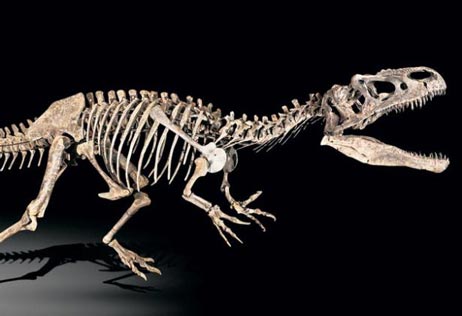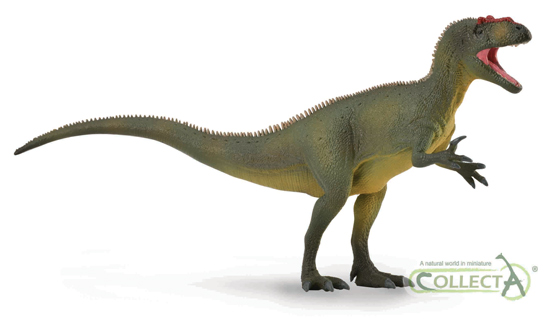Spring Clean for a Rare Allosaurus
We have been asked to update an exhibit featuring the dinosaur Allosaurus. Our work will involve providing information for use on display boards next to a reconstruction of this Late Jurassic theropod.
A Spring Clean for Allosaurus
As part of our work to update the text associated with this dinosaur exhibit, we will be adding information about Allosaurus jimmadseni – a new species within this genus named and described in 2020.

First Described in 1877
Allosaurus was named and described by the American palaeontologist Othniel Charles Marsh in 1877, on the basis of fragmentary remains including a single fossil tooth and a toe bone. The subsequent discovery of many thousands of fossils including nearly complete skeletons, most famously from the Cleveland-Lloyd Dinosaur Quarry in Emery County, Utah, has made Allosaurus one of the best-known of all the big meat-eating dinosaurs. Size estimates vary but it may have grown to more than 12 metres in length and weighed around 2.5 tonnes (depending on species).

The picture (above) shows an Allosaurus roaring figure from the CollectA Age of Dinosaurs Popular range.
To view this range: CollectA Age of Dinosaurs Models.
The State Fossil of Utah
In 1988, in recognition of the abundance of Allosaurus fossil material excavated from the Cleveland-Lloyd Dinosaur Quarry, Allosaurus was appointed the state fossil of Utah.
Several species of Allosaurus have been erected since it was first scientifically described, although most palaeontologists recognise just three species, the most recent of which to be named is Allosaurus jimmadseni (2020). This species was named in honour of James H. Madsen Jr. the first state palaeontologist of Utah.
To read Everything Dinosaur’s blog post from January 2020 about a third valid species of Allosaurus to be described: A New Species of Allosaurus is Announced.
Visit the Everything Dinosaur website: Everything Dinosaur.

